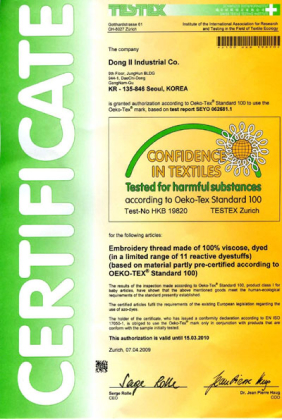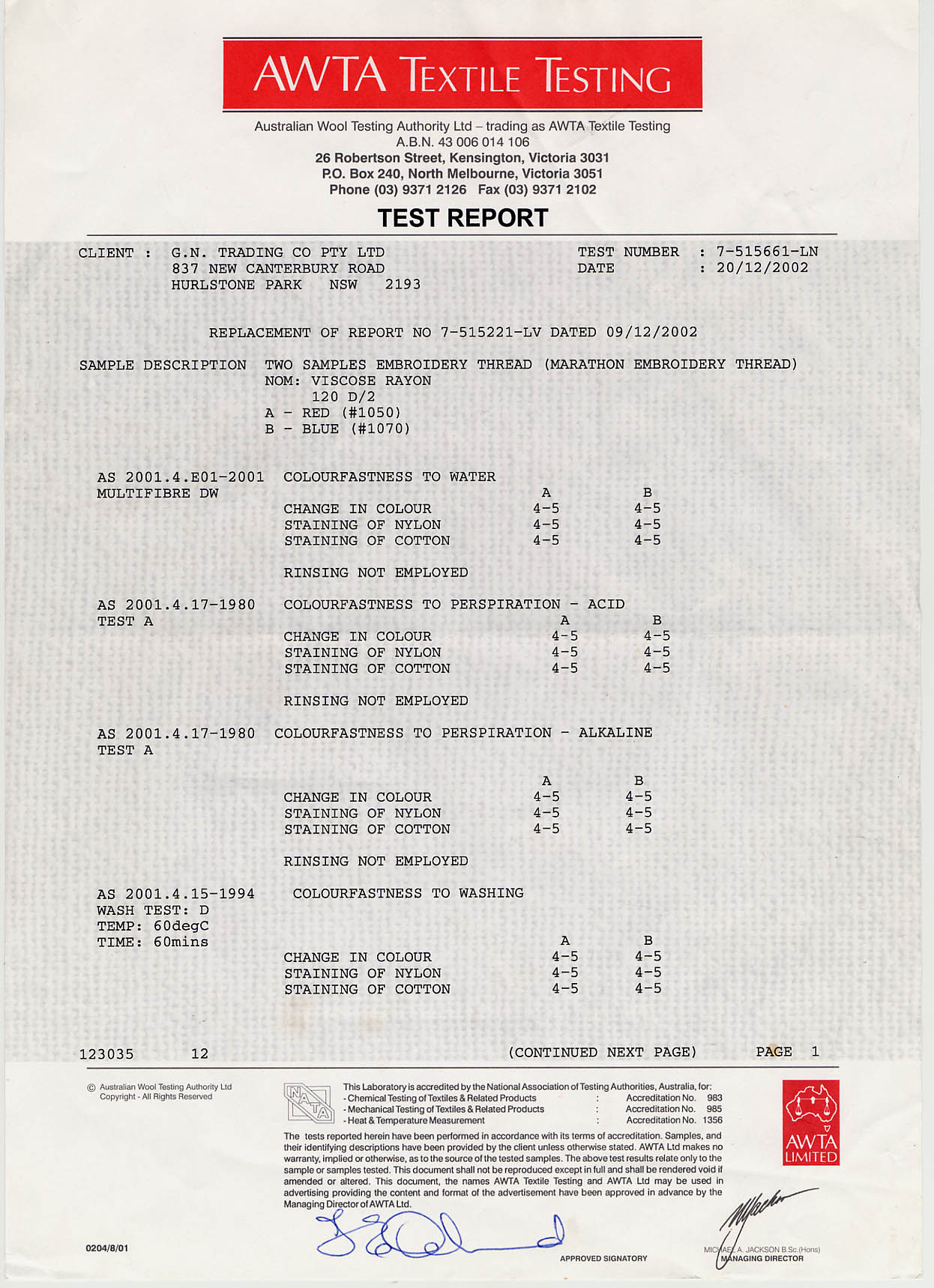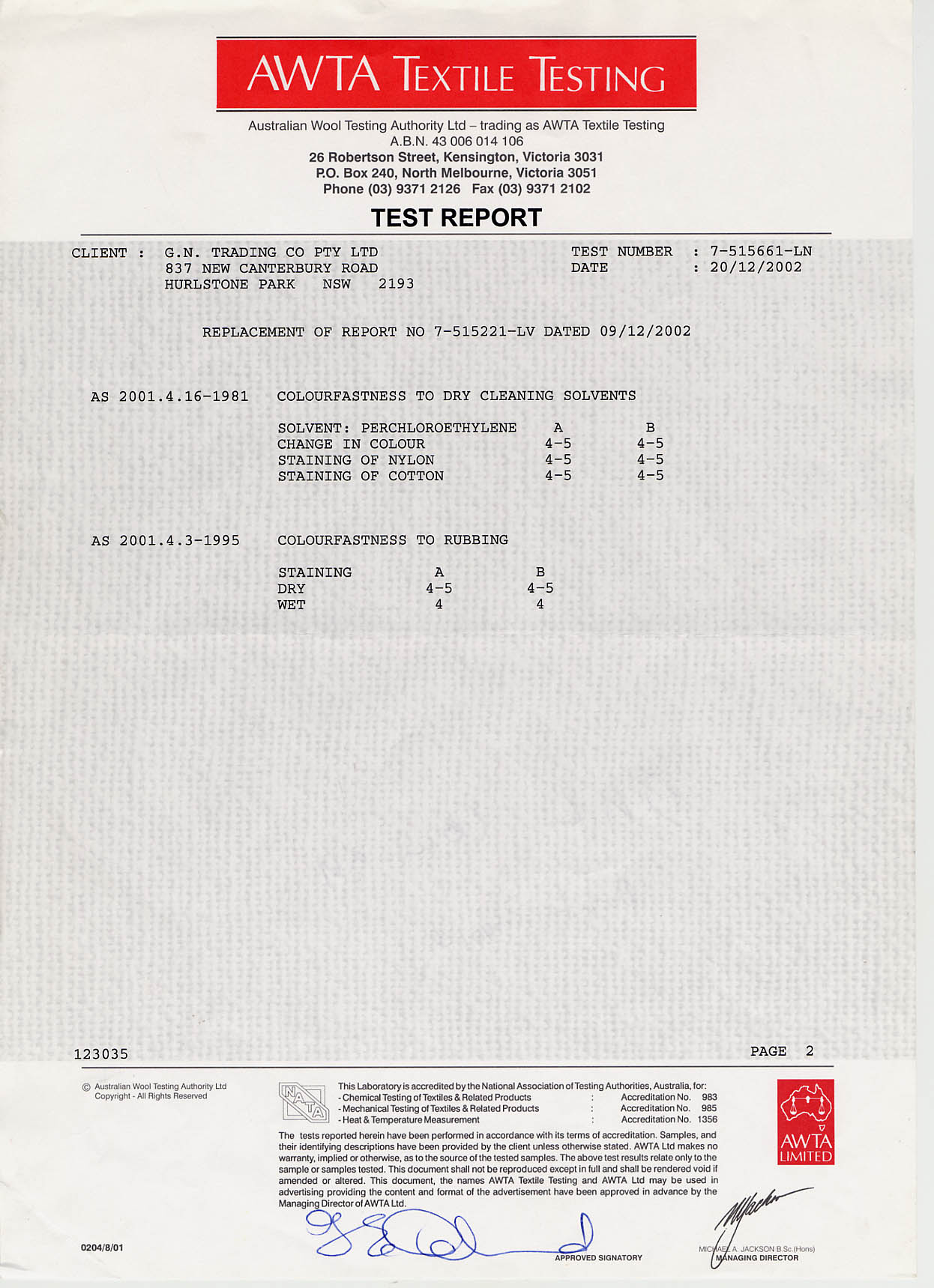Yes. At the back of our colour chart you will find our Oeko-Tex Certification - Confidence in Textiles.
To protect our clients, Marathon Viscose Rayon and Polyester Embroidery threads have undertaken stringent testing by the Swiss Testing Instititute to ensure that they contain no harmful substances. Achieving Oeko-Tex Certification from the Swiss Textile Testing Institute (Oeko-Tex test No HKB 19820, Standard 100, Product Class 1) means that our Marathon Viscose Rayon and Polyester threads are suitable for use in the manufacture of articles for babies. This is why we claim that you can have Confidence in our Textiles and quality you can rely on.
Polyester threads are extremely colourfast no matter what detergents you use (refer to Q3). As for Viscose Rayon Threads, as long as garments are washed using a mild detergent containing no additives of bleaching agents such as chlorine, peroxide or sodium carbonate, Marathon threads will remain colourfast for the life of the garment. Many people prefer to use Viscose Rayons as rayon threads come in a rich variety of colours (397 colours) and especially because of their velvet-like silky lustre. Please refer to the washing instruction for rayon thread and polyester thread listed in the colour charts.
You will need to use Polyester threads when the embroidered garments are to be washed in chlorine bleach or exposed to harsh industrial laundering (eg hospital uniforms, military uniforms etc)
Marathon Viscose Rayon threads have been tested by the Australian Wool Testing Authority Ltd (trading as AWTA Textile Testing). The test was on Viscose Rayon Threads (Red #1050 and Navy Blue #1070). We have achieved 4 - 5 grade - the highest among other brands in the market. Here is the report1 and report2.
Everyone has their favorite colours that they use over and over again. These colours match the colours of the items they choose to embroider. The digitizing company has probably stitched their sample on plain white fabric. If you use the exact colours but change the colour of the background fabric, the result will be different. It might be better to choose colours that look best on your background colour. Try to match the colour as closely as possible to the value of the given colours. Lay the spools on your item to see how they compliment each other. Keep track of the new colour choices for repeated embroidering. It is not unusual to change the colours if the same design is to be stitched on different fabric colour. You can also purchase My Thread box that we carry which is software that converts thread colours from other thread brands to Marathon or any other brand. It has 70+ different thread palettes, it will tell you what the closest match is. (Suggestion from Marathon Threads Canada.)
If you have loops on the back, you have a problem with the top tension as it's too loose, thread breakage can be another sign of tension problems and it can be caused by the upper tension being too tight or using a needle that is too small. (Suggestion from Marathon Threads Canada.)
If the design will stitch over the small hole and cover it completely, you can add a patch of the stabilizer on the back. An alternative method is to add a small patch of water-soluble stabilizer over the hole. It will support the stitching during the embroidering. Clip the threads on the top and back. Reverse the embroidery about 20 stitches from the break. Stitch past the affected area. Stop and remove the hoop from the machine. Trim the stabilizer patch(es). Return the hoop to the machine and complete the embroidery. (Suggestion from Marathon Threads Canada).
None of the machine manufacturers recommend that you use your embroidery machine at top speed. A good speed to stitch your designs out is 500 to 600 SPM. Usually, machines that sew at 800 SPM also have the function of doing straight stitching and the 800 SPM is normally so that you can use that function.


